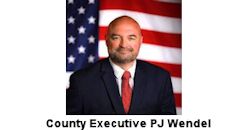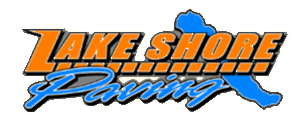The Post-Journal
by Randy Anderson
December 5, 2010
Part 4 of 12
Stateline Gets A Taste Of NASCAR In 1958
Original partner Marv Thorpe left the ownership group to focus his attention on his service station business and to resume his idled racing career. The four remaining owners, Len Briggs, Lloyd Williams, Don Frank and Jerry Frank, incorporated themselves as Busti Speedways, Inc.
An open house was held to kick off the 1958 season. Fans were invited to drive their road cars around the track.
"Driving must be done in an orderly fashion," according to the press release authored by Williams.
The 1958 racing season will be remembered as one of Stateline's most competitive years. Twenty feature events were contested resulting in 14 different winners. The only repeat winners during the season were veterans Dean Layfield with four wins, Jim Patrick with three and Squirt Johns with two scores.
Post-Journal sportswriter Doug Smith dubbed the group of feature winners the "I Won a Feature Club" and wrote glowing reports of "the throttle mashers who were being initiated into the fraternity."
New ''inductees'' included Bud Phearsdorf, John Seeley, Eb Young, Leon Lindstrom, Thorpe, Jim Fiebelkorn, Mike Egan, and Shorty Rollins. Past Stateline winners Joe Sauner, "Mad Man" Johnny McGinley and Emory Mahan also saw starter Jim Ponders' checkered flag.
Smith described Phearsdorf's winning machine as a "decrepit looking 1955 Ford. The fenders dangle, there's not an undented spot on it, and the whole contraption looks as if a good sneeze would reduce it to a pile of rubble."
After his feature win, Smith quoted the exulted John Seeley as saying, "After six years, I'd say it was about time!"
Describing Dean Layfield's win in the Gust Johnson Memorial, the verbose Smith wrote that "Trophies have the same effect on Dean that electric trains have on small boys - he goes for them in a big way."
Stateline conducted a weekly "Pick the Winners" contest in which entrants attempted to predict the first four finishers in that week's feature race for a cash prize. According to Smith, "One person (obviously feminine) wasn't interested in who would win the race. She penned on her entry, 'Boy is the driver of the 511 cute! Is he married?'"
Smith continued, "Cute is scarcely the word to apply to the driver in question. Squirt Johns stands 6-1 and weighs in the neighborhood of 210 pounds. Oh yes, he is married."
Johnny McGinley's victory drive was at the wheel of a "mongrel machine" according to Smith. "It seems the car began life as a '56 Chevy convertible, but was transformed when the hardtop off a '57 model was attached."
Eb Young's upset victory over Johns produced an account glibly depicted as "an epic little man versus big man battle" between the "jockey-sized Young, 5-6, 125 pounds,' and the much larger Johns, now reported as "six-three." Smith said the "near photo finish was decided by less than the difference in their heights."
Joe Sauner's winner's quote on August brought baseball to the mind of Smith. An 18-car pile-up was initiated by a tangle between Sauner and Bud Fanale. The wreck reduced the 30-car field to just 18 and Sauner was able to restart and subsequently win the $250 prize.
"Joe Sauner sounded like a dyed-in-the-wool Yankee fan talking about Casey Stengel," Smith wrote. "'Lucky,' he said. 'Nothin' but luck - never deserved to win - got every break in the book.'"
Briggs, Williams, and the Frank brothers booked a NASCAR-sanctioned race for their one-third mile raceway for July 16, fully expecting all the stars of Bill France's Grand National circuit. Among the throttle stompers advertised to appear to compete for the $4,200 total purse were 1956 and 1957 Grand National Division champion Buck Baker, 1956 GN runner-up Speedy Thompson, California lead-foot Eddie Pagan, five-time NASCAR Short Track champion, Jim Reed, 1956 and 1957 NASCAR Convertible Division champion Bob Welborn, and the winner of the 1957 beach and road course race at Daytona Beach, Cotton Owens.
Unfortunately for the estimated crowd of 3,500 who paid $3 general admission, none of those six drivers showed. According to an account of the race that appeared in The Post-Journal, "Hard luck continued to dog the Stateline operators, who felt they had a complete NASCAR show signed, sealed, and delivered. Several top drivers, however, failed to show. A rain-shortened program at Raleigh, N.C., which broke open an argument over pay, is said to have delayed most of the NASCAR stars who remained in the southern city to continue their efforts to collect."
One driver who did find his way to the Busti speed plant was NASCAR pioneer Lee Petty, from Randleman, N.C. Petty was considered one of the premier drivers on the GN circuit, having won the championship in 1954 and finishing in the top four point positions every year since the inaugural 1949 season.
Although the vast majority of the 23 entrants were "regular" Saturday night racers, "out-of-towners" fared well in the time trials that qualified the drivers for their starting spots in the 150-lap main event. Lee Petty made his presence immediately known as he was fast qualifier in his No. 42 Oldsmobile, thus earning the inside pole position. Earning the other front row starting position was L.D. Austin of Greenville, SC. Making up the second row of the feature was rookie Lloyd "Shorty" Rollins from Corpus Christi, Texas, and Al White from Buffalo. Bob Duell from Warren wheeling the 1957 Ford of Findlay Lake car dealer Julian Buesink qualified fifth while Bill Poor from Wheaton, Ill., completed the third row.
Petty took the green flag to start the race and led the first thirty laps. Local favorite, Squirt Johns of Brockway, Pa., passed Petty and set the pace until he blew a tire on his No. 511 machine on lap 72. Petty regained the point and looked to be on his way to victory until he lost a wheel on the 138th circuit. With Petty's misfortune, Shorty Rollins assumed first place in his No. 99 and led the remaining 12 laps to record his first-ever victory in NASCAR's big league division.
Rollins earned a large trophy and $600 for his effort. Finishing second, and the only other car to complete the 150-lap distance, was Bob Duell, who received $470. The time of the race was 1:03:37. Rollins averaged just over 47 miles per hour.
Of the 23 starters, just 13 were still running when Rollins took the checkered flag. Finishing third was Kenny Johnson (Jamestown), fourth was Emory Mahan (Warren) and fifth was John Seeley (Jamestown). Austin finished sixth and Bill Poor was seventh. Petty changed his tire and recovered to finish eighth. Bud Fanale (Jamestown) was ninth, while John Walker (Sinclairville) completed the top 19. Bob Schnars (Busti), Carl Tyler (Bradford), and Bud Gardner (Clarenden) were also still racing at the end.
Besides enjoying the loquacious reporting of Smith, Stateline fans were treated to a variety of other special events at the speedway in 1958: a Motor Olympics Thrill Show featuring crash-rolls, auto cannons and flame-leaping cyclists; a motorcycle race, and quarter-midget races on a small infield track. Two 100-lap jalopy races were won by Ted Houser and Chuck Martin.
Season attendance was reported as 45,000 paid spectators, including a season high 4,462 on Aug. 30 to witness Jim Patrick win the 100-lap Grand Championship and clinch the 1958 point title.
Next 511 wins the most races, but the Fabulous No. 4 captures the title (Part 5 of 12).
The additional financial assistance of the community is critical to the success of the Chautauqua Sports Hall of Fame.
We gratefully acknowledge these individuals and organizations for their generous support.












